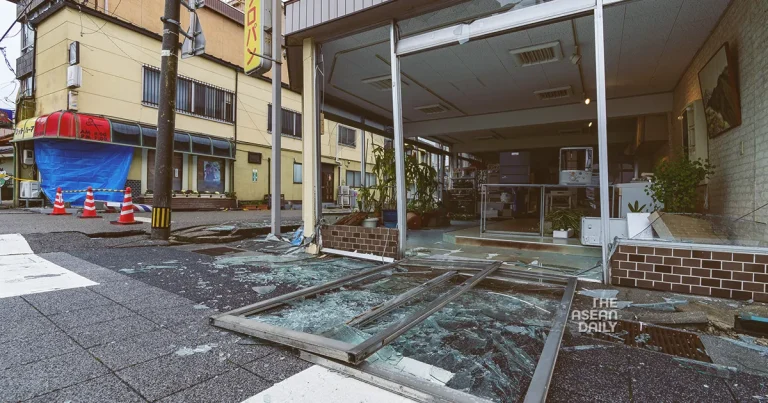3-1-2024 (TOKYO) Japanese rescuers are working tirelessly to search for survivors in the aftermath of a powerful 7.5 magnitude earthquake that struck Ishikawa prefecture on January 1. The earthquake triggered tsunami waves over a meter high, ignited a major fire, and caused severe damage to roads. Authorities have warned of the potential for landslides and heavy rain in the affected areas.
The Noto Peninsula in Ishikawa prefecture was the hardest hit, with several hundred buildings engulfed in flames and houses reduced to rubble. Late Tuesday, the regional government confirmed that 55 people had been killed and 22 others sustained severe injuries. However, the death toll is expected to rise as rescuers face aftershocks and adverse weather conditions while sifting through the debris.
Over 31,800 individuals have sought refuge in shelters, seeking safety from the aftermath of the destructive earthquake. Prime Minister Fumio Kishida’s government is convening an emergency task force meeting on Wednesday morning to discuss response strategies for the ongoing crisis.
Prime Minister Kishida emphasized the urgency of the situation, stating that time is of the essence as there may still be numerous people trapped under collapsed structures. The Japan Meteorological Agency (JMA) issued a heavy rain warning for Noto, adding to the urgency of the rescue operation. The agency urged residents to remain vigilant and be on the lookout for potential landslides until Wednesday evening.
In the coastal city of Suzu, Mayor Masuhiro Izumiya reported that there were almost no houses left standing. He described the situation as “catastrophic,” with around 90 percent of the town’s houses either completely destroyed or severely damaged.
A survivor taking shelter in the town of Shika expressed her fear and sleeplessness due to the ongoing aftershocks. Uncertainty looms as residents remain on edge, unsure of when the next tremor will strike.
Ishikawa prefecture continues to grapple with power outages affecting nearly 34,000 households, while many cities are still without running water. After several thousand people were stranded for almost 24 hours, Shinkansen bullet trains and highways have resumed operations.
According to the US Geological Survey, the earthquake registered a magnitude of 7.5, while the JMA measured it at 7.6, leading to a significant tsunami warning. Although Japan has now lifted all tsunami alerts, the city of Wajima experienced waves reaching at least 1.2 meters (four feet) in height, and smaller tsunamis were reported in other areas.




